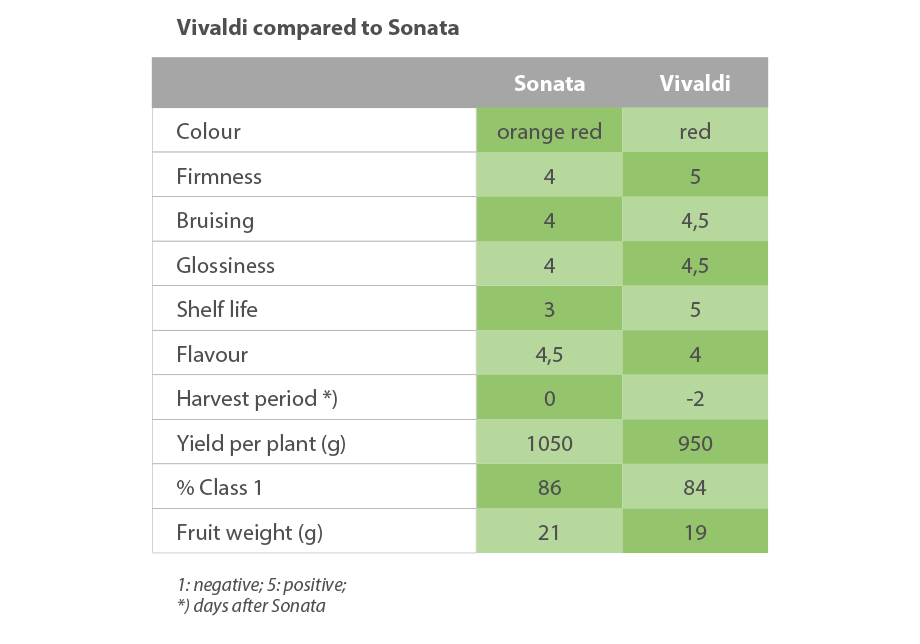Vivaldi

Flowering and picking period
The flower quality of Vivaldi is good. The flowers are of medium size and produce sufficient amounts of pollen giving rise to a low percentage of misshapen fruits. Many composite flower trusses tend to develop simultaneously which can result in smaller berries and a shorter more intensive picking period. Flower trusses are normally positioned below the leaf canopy. When cultivated under glass, the flower trusses must be sufficiently spread out. The harvest period of Vivaldi is compared to Sonata on average 2 days earlier.
Fruit quality
Vivaldi produces attractive, medium to short conical bright shiny fruits which are juicy and have a pleasant taste. Berries generated by Vivaldi are slightly smaller than those of Sonata. The berry’s texture is clearly different due to its notable firmness. Berries of this variety are uniform in shape and seeds are superficially located as opposed to deeply embedded. Bruising is not typical of this variety and if present not easily visible. Shelf life is considered excellent. At high temperatures, fruits may become dark. The fruit of Vivaldi is mildly resistant to mildew.

Productivity
The yield and fruit size of Vivaldi is almost as good as that of Sonata. Fruits are typically easy to pick comparable to Sonata. Growers should aim for cultural practices that lead to a slow uniform flower differentiation which will result in an extended flowering period and subsequent increase in average fruit size.
Vulnerability to diseases
Vivaldi produces a vigorous erect plant that can become susceptible to powdery mildew (Sphaeroteca macularis) towards the end of harvest, however to date mildew has not been observed on the fruits themselves, yet. Vivaldi is moderately resistant to crown rot (P. cactorum) as well as to fruit rot (B. cinerea). The vulnerability to verticillium wilt (V. dahliae), angular leaf spot (Xanthomonas fragariae) and antracnose (Colletotrichum acutatum ) is not known yet because these diseases have not been observed up to now.
Available as:




